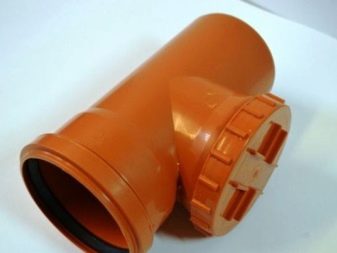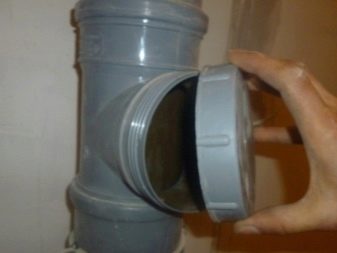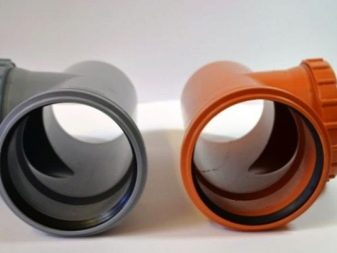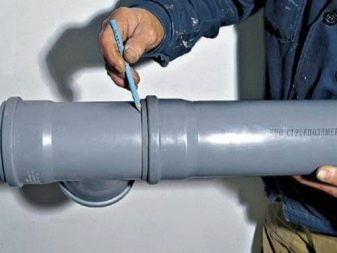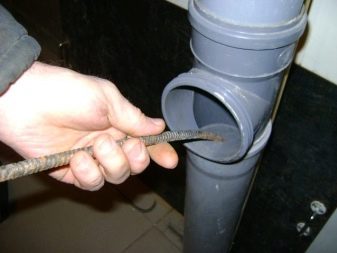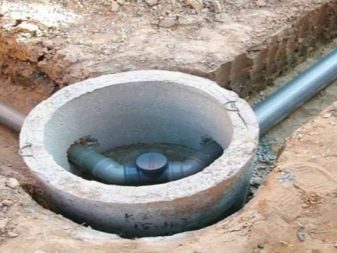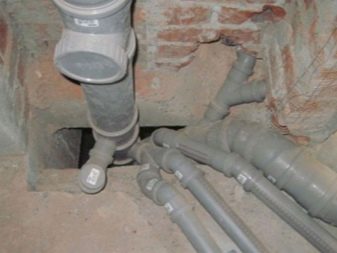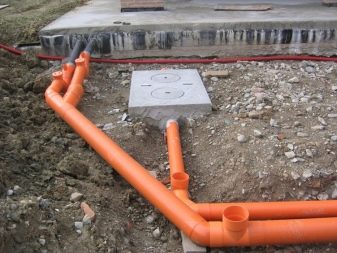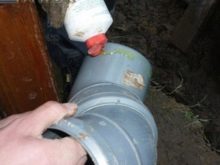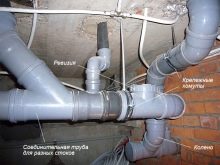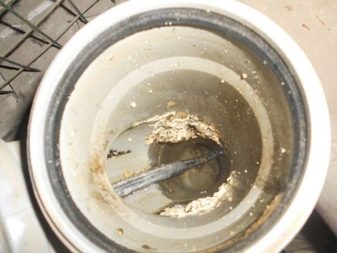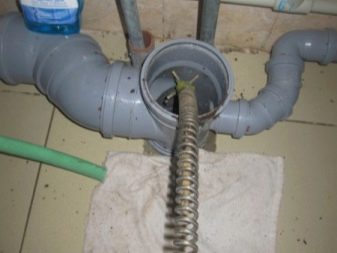Sewer audit: what is it and what is it for?

Sometimes sewers can give an unpleasant surprise in the form of a blockage. The question arises how to get to the garbage plug without damaging the system. Especially for easy cleaning of pipes and sewer audit was developed.
Item Description
Sewer audit - part of a plastic pipe with a special removable lid. It is used for blockages, allows you to freely get to the problem area and eliminate the garbage plug.
Installed inside or outside the building, but always in an easily accessible place. If during the installation of the sewer system, an audit was not provided, then for cleaning it will be necessary to make a hole in the pipe.In this case, the violation of the integrity of the structure will lead to leakage and unpleasant smell.
This element is necessary when installing sewer systems, and the requirements for its installation are specified in the SNiP.
Externally, the part looks like a tee with a round hole on which the cap is screwed.
Purpose
One of the main problems of sewage are considered blockages. They can appear for various reasons: incorrect pipe slope, small diameter, large debris from entering the drain, rust inside the pipe, remnants of hair, grease. Debris can appear even if large debris does not enter the sewer. In some old-style houses, cast-iron sewer pipes are also installed. The inner surface of such pipes is rough, and hair, threads, grease, and coffee residues easily stick to it, which eventually leads to clogging.
Debris can appear far in the pipes, and it is impossible to eliminate them with the help of special means or a vent. Especially this problem is relevant for residents of apartment buildings. Especially to solve this problem, a tee was designed with a hole for easy cleaning of pipes from debris.
Kinds
Sewer pipes are made of polypropylene or polyvinyl chloride. The color of the product indicates the place of installation: orange - for outdoor, gray - for internal. Connection with pipes is carried out in a simple and reliable bell-shaped way. Flare is the name of the wide end on one side of the pipe. When assembling the flat end is connected to the socket. For tightness use a special glue or rubber seal.
Advantages of polypropylene revision:
- does not deform in the cold and at temperatures up to 950 degrees;
- has a smooth inner surface to reduce the risk of blockages;
- does not require additional staining;
- service life - 50 years;
- resistant to chemical attack.
Advantages of polyvinyl chloride revision:
- durability - the basis of plastic prevents corrosive processes;
- ease;
- ease of use due to special mounting methods (no need for additional tools).
Options:
- diameter (d): 50 or 110 mm;
- length: d50 mm - 115 mm, d110 mm - 185 mm;
- Weight: d50 - 75 g, d110 - 330 g.
Pipes d50 mm are used to drain water from household and sanitary appliances, d110 mm - on the toilet sink and on the risers.
The audit is placed in the place of the supposed accumulation of garbage: optimally on each pipe and on the main riser. In this case, you can quickly and easily check the system and carry out cleaning. When installing, all joints should be sealed to prevent leakage and unpleasant smell.
Features of operation
The end part of the audit is the most fragile. When removing the blockage, the cable strongly presses on this particular section of the structure, because of which cracks appear on it. Subsequently, an unpleasant smell and sewage can penetrate through such damages. When choosing a revision, you should first of all pay attention to this, especially if the pipes are made of polyvinyl chloride.
Hole thickness must be greater than 2 mm.
Installation rules
For the assembly of an internal sewer system, pipes d50 mm and d110 mm are used. With a hidden gasket, it is necessary to install a viewing hatch opposite the revision, above the underground sewage system - a well.
On the street, sewer pipes are laid below the level of soil freezing. For convenient access and protection of pipes from bad conditions, a manhole is constructed.
The distance between wells depends on the length of the system:
- on a flat surface every 8–10 m;
- on elevations - 3-5 m.
For outdoor use elements that can withstand the load of the soil and are not deformed in the cold.
Vertical installation is used in office and residential buildings. Sewer audit in homes above 5 floors is set at least every 3 floors, in other cases - on the first and last. For convenience, it is placed on turns (more than 450), branches, traps.
With horizontal assembly, the elements are placed with regard to wastewater:
- drains, unpolluted industrial - pipe d50 mm 15 m apart, d110 mm –15 m;
- domestic, near adjacent production facilities - 12 m and 20 m;
- industrial with solid particles - 10 m and 12 m.
Sewer audit is not set:
- when the strut passes through any room where the enterprise is located;
- on the pipes laid under the ceiling (in this case, cleaning with the output to the next floor is necessary).
Clearing is a little different from revision. This is a slanting tee with one or two taps at a certain angle. Clearing allows to use a cable without problems and to eliminate the accumulated garbage. The tightness of the element provides a plug on the mastic.
Installation
To install, you need to clean the joints (the socket and the smooth end of the pipe) from debris, dust. Make sure there is a rubber seal in the socket. The smooth end is inserted all the way into the socket and is pulled back about 10 mm.
Begin assembly with sewer risers, followed by laying outlets and drain pipes. The last to be installed toilet, sink and other plumbing. Assembly begins with a basement or ground floor. It is stated in the SNiP that sewers are laid along the wall or in special gates. With the open version of the pipe are located in the corners of the bathrooms, with the hidden - along the axis of the toilet. The riser should be located at a distance of 2 cm from the wall. Pipes with a diameter of 50 mm should be laid at a distance of 4.5 cm from the wall, with a diameter of 100 mm - 7.5 cm.
Fractures in the sockets when installing the riser are not allowed. Vertical deviation - no more than 2 mm by 2 m. Installation height of the audit - 1 m from the floor. Racks are fastened with hooks under the sockets. The diameter of the pipes should be the same along the entire length of the riser.
In private homes, the audit can be installed:
- before release on a well;
- on all risers above the horizontal pipe laying;
- on horizontal bends.
How to clean the pipes?
The blockage is formed when large debris gets into the sewage system: rags, filler for trays, construction debris, sand, grease.
For cleaning, the auditing opening is opened above the supposed site of blockage, a special cable is pushed by rotational movements to the place of accumulation of garbage. During operation, it is important to ensure that no loops form from the cable. After breaking the plug, the cable will move freely through the pipe.
If construction debris, filler, sand was the cause of the blockage, after removing the cork in the toilet, you need to drain a few buckets of water; hot water is used when fat accumulates. The rags are pulled out with a cable in a rotating motion.
How to find in an apartment building?
In high-rise blocks of the riser - a common problem. Sometimes it is necessary to act quickly, since the sewage from the upper floors through the toilet arrive at the apartment, and the emergency service does not hurry to call.
Auditing hatches, according to SNiP, are located:
- on the upper floors (in houses with more than 4 floors, an audit is made every 3 floors);
- cornering tubes;
- on horizontal plots.
How to clean the clog in the sewer, see the following video.
